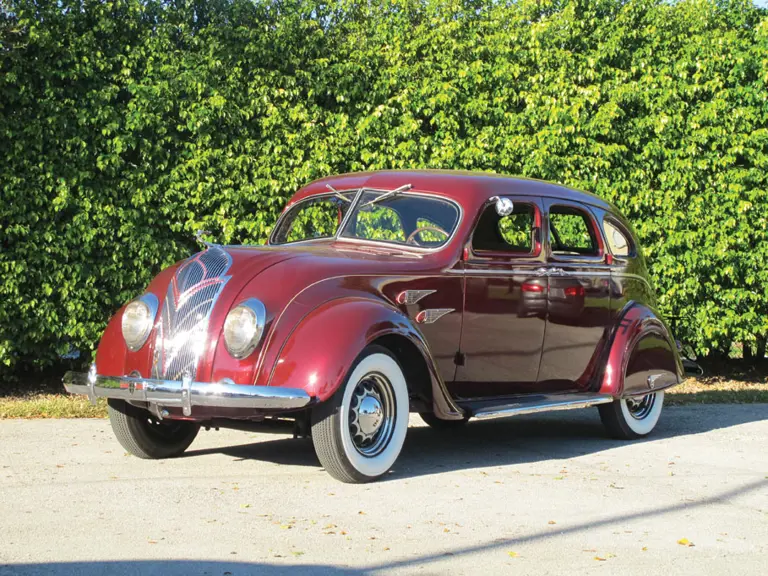In 1934 the entire DeSoto lineup featured Chrysler Corporation’s new streamlined Airflow design. A design far ahead of its time, it featured built-in headlamps and wider front seats that could accommodate three adults abreast. The hood was extended past the front axle, the rear fenders had full fender skirts; there was a rounded radiator grille and a modified vee-shaped windshield were some of the styling features that set this car apart from anything ever seen on North American shores.
Not just an exercise in styling, the Airflow series was also a mechanical marvel, incorporating many new concepts in an effort to improve the driving experience. For improved handling, neutral weight distribution was attempted and the body was lower to the ground thanks to a unit body construction and extra-long leaf springs.
One of the major pay-offs of the Airflow design was greatly increased fuel consumption over traditionally styled vehicles of the era. Harry Hartz managed a cross-continental road trip from New York City to San Francisco, California with a total fuel bill of just $33.06, averaging better than 22 miles per gallon.
In 1936 the general Airflow design was only slightly revised, the most prominent change being an all-new and very elegant ornamental radiator grille design. Mechanically, the DeSoto was virtually unchanged with the exception of a new flanged steel roof panel insert bolted to the perimeter of the roof, it was acoustically treated and electrically insulated and served admirably as the antenna for the radio.
The 1936 DeSoto Airflow presented here is powered by a 241-5-cid inline six-cylinder engine with a floor-shift three-speed manual transmission. The Airflow is presented in burgundy with tan cloth interior. The car has many distinctive trim styling elements that blend well with this standout design. Fender skirts, artillery-type wheels and wide whitewall tires are also found on the DeSoto.



 | Fort Lauderdale, Florida
| Fort Lauderdale, Florida


